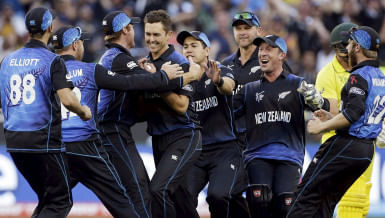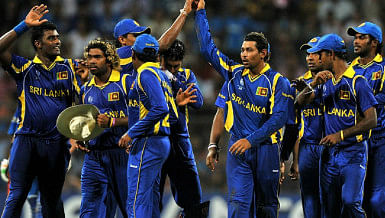On Wednesday, Mohammad Amir recorded the best bowling figures of the 2019 World Cup so far when he picked up five wickets for 30 runs against Australia in Taunton. He picked up four of his wickets in the last 10 overs, mixing in slower deliveries, cross-seam deliveries with his seam-up stock deliveries to confuse Australia. Known more as a new-ball bowler, his performance showed that there are no absolute fixed roles for bowlers in this bat-dominated tournament.
In a mirror image, Bangladesh's Mustafizur Rahman is known more as a bowler who excels in the death overs with his slower cutters. But like Amir, there is another side to Mustafizur. Against India in the practice match on May 28, he troubled both Rohit Sharma and Virat Kohli with his new-ball spell, and in the World Cup opener against South Africa, his four-over opening burst had the South African openers playing and missing.
In the two matches since, Mustafizur has been given just one over in the first 10 overs. After the narrow two-wicket loss to New Zealand, skipper Mashrafe Bin Mortaza said that Mustafizur was more effective with the old ball. There is a lot of data to support that position -- in the last year, Mustafizur has the most wickets in the last 10 overs worldwide with 20, at an average of 17.9 and a strike rate of 16.6 balls for every wicket. In the first 20 overs, his numbers suffer -- an average of 49 and a strike rate of 57.9. But a deeper look into the amount Mustafizur has bowled in the first 20 overs raises the question of whether his lack of utility up front is a self-fulfilling prophecy.
In the first 20 overs in 21 innings over the last year, Mustafizur has bowled 402 balls -- which works out to around 19 balls on average per innings. His corresponding figures in the last 10 overs is 18 balls on average in half the amount of overs. Bowling 19 balls on average when the batsmen are more intent on preserving wickets than going hell for leather denies a bowler enough opportunities to take wickets with good balls and also the time to set up batsmen with a ball that is swinging.
In the first three years of his career since mid 2015, his average in the first 20 overs was 32.28 and his strike rate was 41.93. He took 14 wickets bowling more than 22 balls per innings in the first 20 overs. These figures show that while he is more effective with the old ball in the death overs, he still has some value up front, and Bangladesh could do with that option. He can now bowl consistently above 135 kmph and often crosses 140 -- a positive sign that he is close to the level he was before a shoulder injury in summer 2016. In the practice match against India, he got Shikhar Dhawan out by swinging the ball both ways at pace.
The new ball will always swing in England, and as he showed in his limited opportunities so far, he can be a threat. It may give the firepower and early sting that Bangladesh have seemed to lack so far. That does not mean that he cannot bowl at the death, just that a little more flexibility may give the Tigers the early wickets that they often crave, and the lack of which set them back decisively in the hammering against England.


 For all latest news, follow The Daily Star's Google News channel.
For all latest news, follow The Daily Star's Google News channel. 









Leave your comments